The perfect marketing campaign is:
- personal: it speaks to each consumer on their own terms.
- interactive: it encourages consumers to engage actively with the brand.
- responsive: it works in any format required.
- rewarding: it’s worthwhile for both brands and consumers.
That list might sound like a tall order. But marketers are rising to the challenge, with more personalization, engagement, and fun campaigns. We can sum up the solutions in just one word: Gamification.
What is gamification?
Gamification is an idea that sounds simple but has a lot of power. It means taking the elements which make games exciting and applying them to other areas of life.
For example, gamification has been hugely successful in education. By making classes interactive, offering students the chance to earn points, and introducing a level of competition, teachers can motivate their classes to learn better.
Gamification in marketing, and gamification for business, is also gaining popularity. Brands now use gamification to train their employees, retain customers, and give online audiences something new.
In fact, marketers have been predicting the value of gamified campaigns since at least 2017. Playable ads and interactive experiences are a huge part of how we reach consumers and collect marketing data.
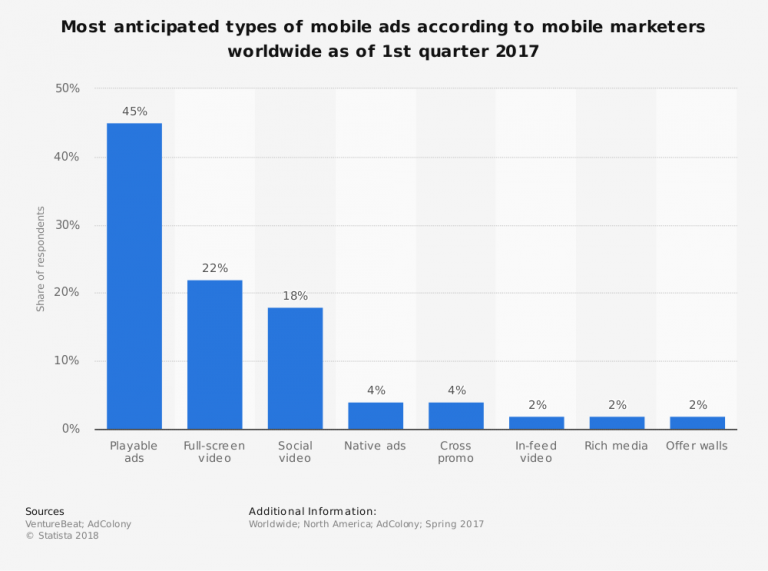
So far, so good. But how do you actually create a gamification campaign? Doesn’t all of this sound a bit… well, complicated?
Don’t worry: you don’t need to build your own version of Minecraft or invest thousands in creating a customer scoreboard.
As gamification marketing becomes more popular, it’s also becoming more accessible. In the rest of this post, I’ll share some easy ways to use gamification in digital marketing – plus some examples of successful gamification campaigns.
Easy ways to use gamification in your marketing campaigns
Let’s go back to our original definition of gamification marketing. There are a few key elements which often turn up in gamified campaigns, such as:
- Interactivity
- Points systems or reward systems
- Competition
You can use any or all of these in a mobile gamification campaign. For example, you could have an interactive, playable ad; or a customer reward system built on accumulating points; or a game that set users against each other but didn’t necessarily involve a scoreboard. It’s up to you and your audience’s tastes.
Because online attention spans are short, it’s usually a good idea to choose a game format that users already recognize. The most popular branded mini-games and playable ads use classic formats, such as memory games, word searches, puzzles, simple platform games or Space Invaders-style shooters.
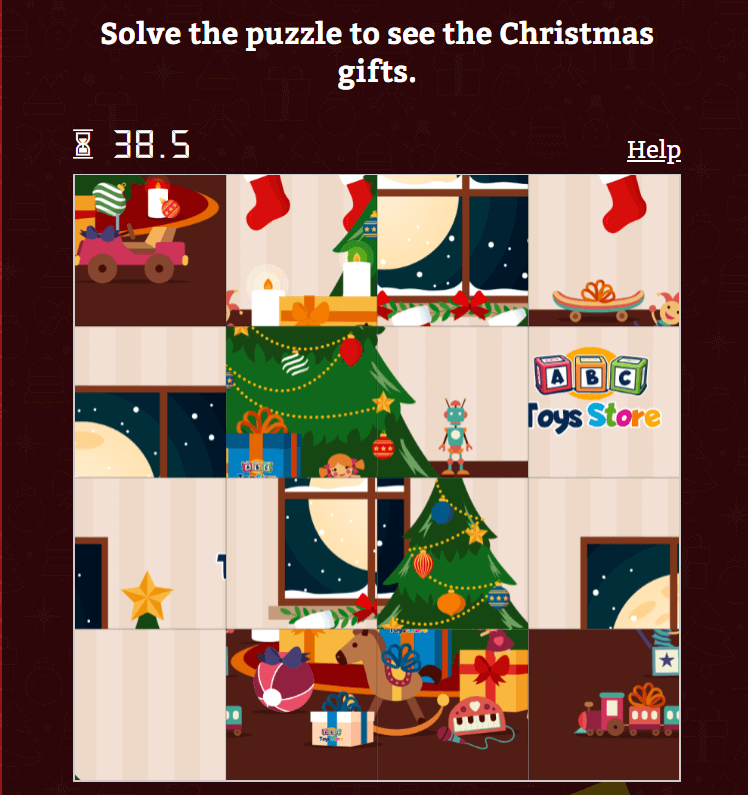
Create your own puzzle with our instant template!
You’ll also need to think about where your gamification campaign will appear. Mobile games and playable mobile ads are extremely popular, but they’re not the only option.
You can also host games on your desktop site, send them out to email subscribers, feature them on social media, or even set up games in your brick-and-mortar store to entertain shoppers while they queue.
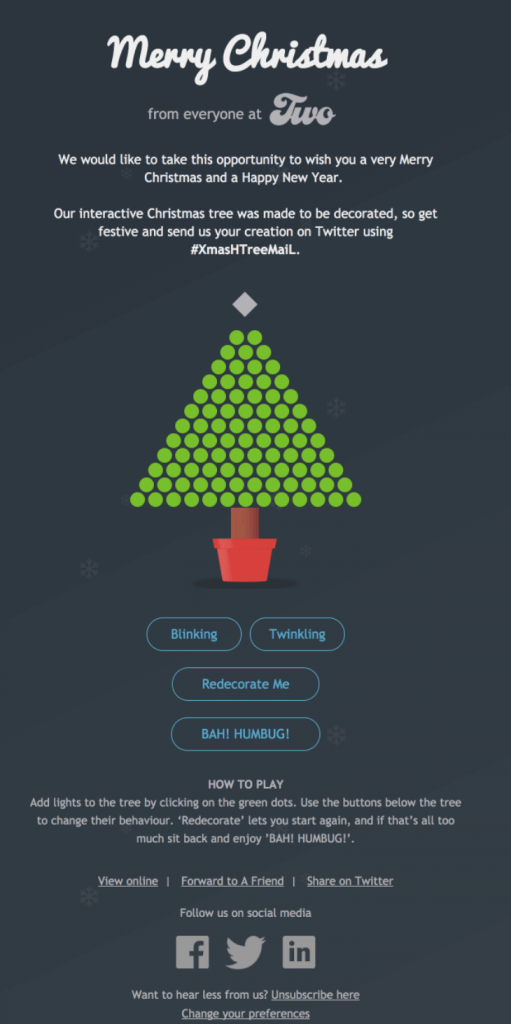
Because there are so many places to put a gamified campaign, it’s a good idea to choose a responsive design that will work for any screen size or device. The Easypromos gamification platform allows you to create and preview fully responsive games.
Examples of gamification marketing
Next, let’s take a look at some examples of gamification marketing. Mobile gamification campaigns can be valuable to any brand – whether B2C or B2B, ecommerce or high street, a social native or a legacy brand.
Let’s start with B2C and B2B. B2C brands have been faster to adapt to gamification for business. In fact, they’ve been doing it for decades.
Something as simple as a points system for purchases can motivate people to spend more time and money with your brand. You can also challenge people to recruit their friends in exchange for points or other rewards. You could even encourage people to “race” their friends in collecting points. The daily newsletter from The Hustle does this par excellence:
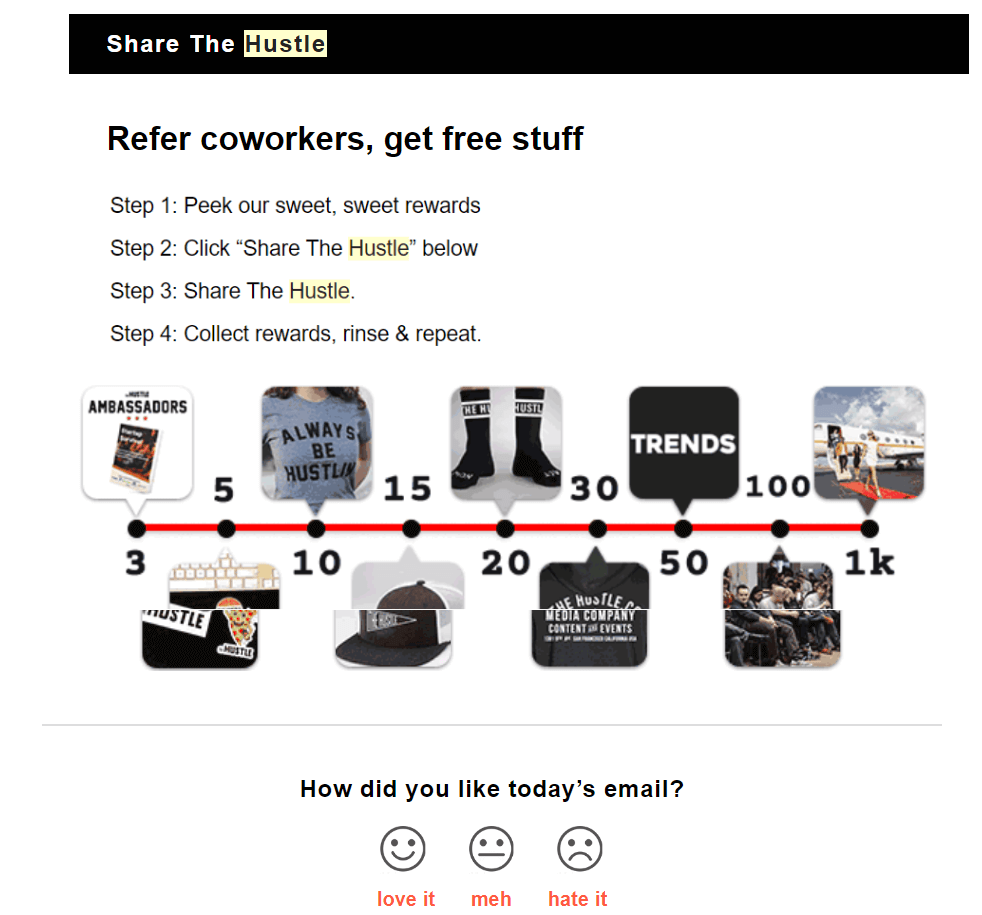
This kind of gamification strategy works just as well for B2B. After all, whether your business is B2B or B2C, there are still real, human people on the other side of the screen – real, human people who want a little bit of entertainment in their day.
The only thing which changes is the rewards involved. So, instead of offering store points or gift cards, you could motivate B2B users with a free product demo or subscription discount. Challenge them to accumulate points by testing new features. Offer them exclusive whitepapers and seminars when they refer a friend.
One great example of this kind of B2B gamification is the Quartz email newsletter. Quartz is a global business news publication, with a readership that leads towards tech and data. So when they published this in-depth report on data compression, they held readers’ attention spans with quick quizzes and interactive elements along the way. Now that’s gamified content marketing.
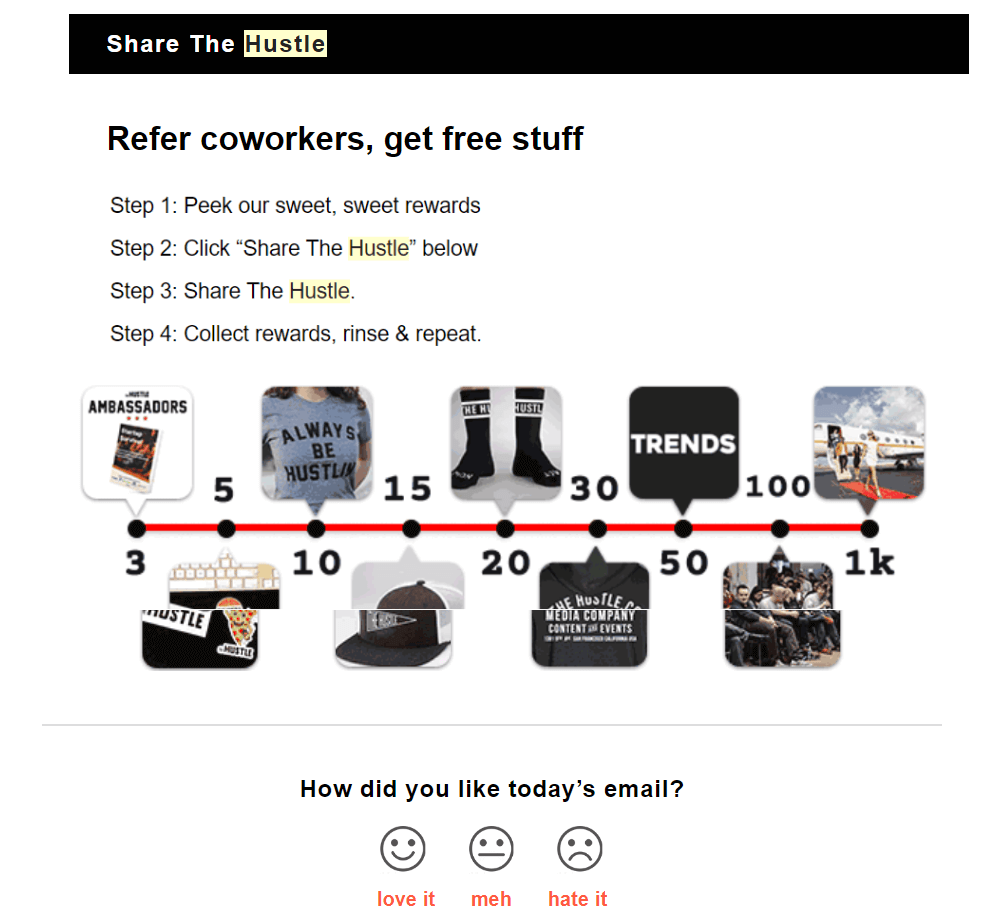
For e-commerce and high street stores, there’s a lot of overlap in what you can do. Whether your store is virtual or brick and mortar, you probably still have an email list, a social media presence, and a website. Those are all opportunities to reach potential customers with gamified, interactive content.

The same applies to digital natives and traditional brands. In 2020, almost every brand has some kind of online presence. While you might choose different social media channels, or favor a different style, you’re still online; which means you can still seek to give customers the entertaining, personalized retail experience that they crave.
Challenge customers to find hidden objects in an image of your store! Try the demo and create your own campaign. Want more ideas? Discover 3 easy gamification campaigns to get you started.
Do you need help with launching a gamified promotion? Contact our Support Team, they’re always ready to help and assist!
[hubspot type=cta portal=19559696 id=597cacd6-4ec8-466f-b760-668ad10d25f2]